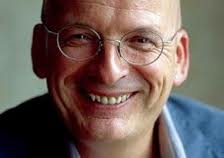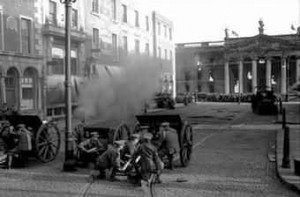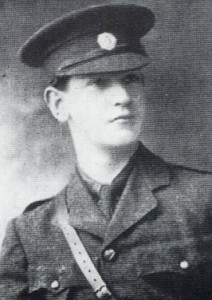“I shot and killed all that I had been denied, all the commerce and snobbery that had been mocking me and other hundreds of thousands behind glass and locks, all the injustice, unfairness and shoes–while the lads took chunks out of the military.”
Henry S mart, born at the turn of the century, leads such a miserable childhood that he is on the streets by the age of five and solely responsible for his younger brother Victor by the age of nine. Always cold, hungry, and lacking a warm place to sleep, Henry and Victor are at the mercy of the elements, so concentrated on staying alive from moment to moment that they have no time to think toward the future. By the age of fourteen, Henry has met up with other poor who have some of the same resentments he has toward those who have dominated the land and commerce for so long. In 1916, the Irish Republican Brotherhood takes over the General Post Office on Easter Monday, declares the establishment of a new government, and raises its flag, and Henry is there–not out of a sense of patriotism so much as a sense that he is at home–and is fed–when he is among these people. When the shooting starts, Henry’s first bullets are aimed not at the British or at the police, but at the store window across the street, which he sees mocking him with its shiny new boots, something he has never had.
mart, born at the turn of the century, leads such a miserable childhood that he is on the streets by the age of five and solely responsible for his younger brother Victor by the age of nine. Always cold, hungry, and lacking a warm place to sleep, Henry and Victor are at the mercy of the elements, so concentrated on staying alive from moment to moment that they have no time to think toward the future. By the age of fourteen, Henry has met up with other poor who have some of the same resentments he has toward those who have dominated the land and commerce for so long. In 1916, the Irish Republican Brotherhood takes over the General Post Office on Easter Monday, declares the establishment of a new government, and raises its flag, and Henry is there–not out of a sense of patriotism so much as a sense that he is at home–and is fed–when he is among these people. When the shooting starts, Henry’s first bullets are aimed not at the British or at the police, but at the store window across the street, which he sees mocking him with its shiny new boots, something he has never had.

Depicting Henry’s life from his wretched early childhood through the Irish War of Independence (1919 – 1921), author Roddy Doyle uses his formidable descriptive talents to show the horrors of poverty in Dublin and the resourcefulness of characters like Henry who manage to postpone starvation day by day, in the process showing also why the masses of desperate poor were so willing to risk their lives by joining the rebellion. The vibrant narrative of the Easter Rising itself and of the action inside the General Post Office provides some of the novel’s most fully drawn scenes and some of its best dialogue. In the aftermath of the Rising, with the leaders of the movement dead, various rebellious factions with different philosophies vie for control and compete for power, leading Henry to note, ultimately, that a successful movement is run “like a business,” not necesssarily a positive observation.

Including characters like Padraic Pearse and James Connelly, with whom Henry comes into contact at the GPO, and Michael Collins, for whom Henry later works as an assassin, Doyle recreates Irish history. Though the novel’s scope is wide and the events are among Ireland’s most significant, however, the focus remains clearly on Henry, a handsome character of considerable charm who never had the opportunity to be a child. He evokes empathy, even as he is performing terrible acts, and his discovery of love with “Miss O’Shea” is the one aspect of his life which allows him to be “normal,” though she eventually becomes even more radical than he. (Her lack of a first name in the novel may be meant to evoke memories of “Kitty O’Shea,” the controversial wife of Charles Stewart Parnell, an earlier nationalist leader, thereby connecting the twentieth century rebellion with earlier nationalist movements of the nineteenth century.) Henry, however, despite his contributions to the success of Michael Collins and his cohorts, remains an outsider, not a leader, never allowed into the inner circle of the movement.

Written in 1999, the first of a projected trilogy entitled “The Last Roundup,” A Star Called Henry marks a departure for Doyle, becoming his only novel to date which deals with a monumental historical setting and includes some of the real-life characters who shaped it. The decision to use a well-known historical setting can be both a blessing and a curse. The scenes in the General Post Office here are blessings–fast-paced and vibrantly written, some of the best of the novel–but they are so exciting that the aftermath (and much of the novel) feels like a bit of a let-down by comparison. And though Henry is a well-developed character, he is very young–and limited by his upbringing. He has learned in his desperate life to act according to what is expedient, and the reader does not observe the inner conflicts which make great characters come alive. It is not until the end of the novel that Henry begins to ask questions.
A Star Called Henry is a significant novel, however, one which will be regarded as one of Doyle’s most important. Though it may never be as loved as much as some of his other novels, which often include humor to set the misery into sharp relief, Doyle has treated his serious subject with respect and honesty, taking a close look at the people involved with the independence movement–both the heroes and the unknowns–and making them human.
Notes: Also reviewed here: Doyle’s THE DEAD REPUBLIC , THE GUTS, SMILE, LOVE, LIFE WITHOUT CHILDREN
The author’s photo appears on http://www.culturenorthernireland.org
The photo of the Easter Rising shows police trying to take back the General Post Office after the Irish Republican Brotherhood—and Henry Smart–had taken it over. http://www.irishhistorian.com
The photo of the young Michael Collins in the uniform of the IRB appears on http://sarasmichaelcollinssite.com
